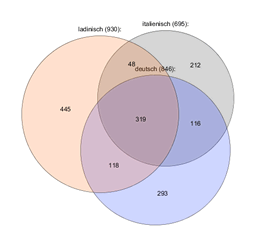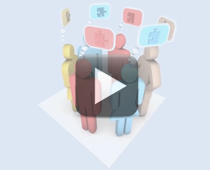The successful development of organizations presupposes favorable conditions in the regional surroundings. Through political decision processes, the relations between the chief actors can be innervated to foster a sense of mutual interest, respect and trust. Higher ranking goals held in common can be identified and affirmed.
Example: Relations between three linguistic groups in South Tyrol

concept network comparison
Problem
Looking back on a history rife with conflict, what are the prospects for the three ethnic groups in South Tyrol, Italy? Today South Tyrol is often named as an example of different linguistic groups living together peacefully. Through the project, we hoped to better understand the three groups and their actors, to explore prevailing convictions and attitudes of the three linguistic groups, and to delineate visions leading to future action.
Aims
The project endeavored to investigate fundamental convictions, values, goals and intentions for action for each of the three linguistic groups as well as for three age groups within each ethnic group. We wanted to know in which areas it would be efficient to organize separate group-specific projects and in which areas common social projects promise success.
Method
Three hundred 15-minute oral interviews were conducted in the language favored by the respondent. Texts were segregated according ethnic and age groups and analyzed separately. An additional group was built for persons coming from linguistically mixed families.
Benefits
The project provided a rich database that allowed everybody to make inquiries regarding concepts, evaluations, causal assumptions, opinions, wishes, arguments and so forth and compare results with between the various subgroups.
In this way we identified unique characteristics and communalities between the groups so that conflicts could be analyzed and possible solutions highlighted. The arguments of conflicting groups were used in simulated dialogues as opportunities for problem solving. In cases where groups are ready to meet each other, this method can also be used to provide a path into the communication without putting any of the participants on the spot.
Based on the project results, a monitoring system for persistent observation of qualitative developments could be designed to display trends.
This project illustrates potential benefits from using GABEK to prepare political decisions likely to be accepted by those affected.
 Deutsch
Deutsch  English
English 